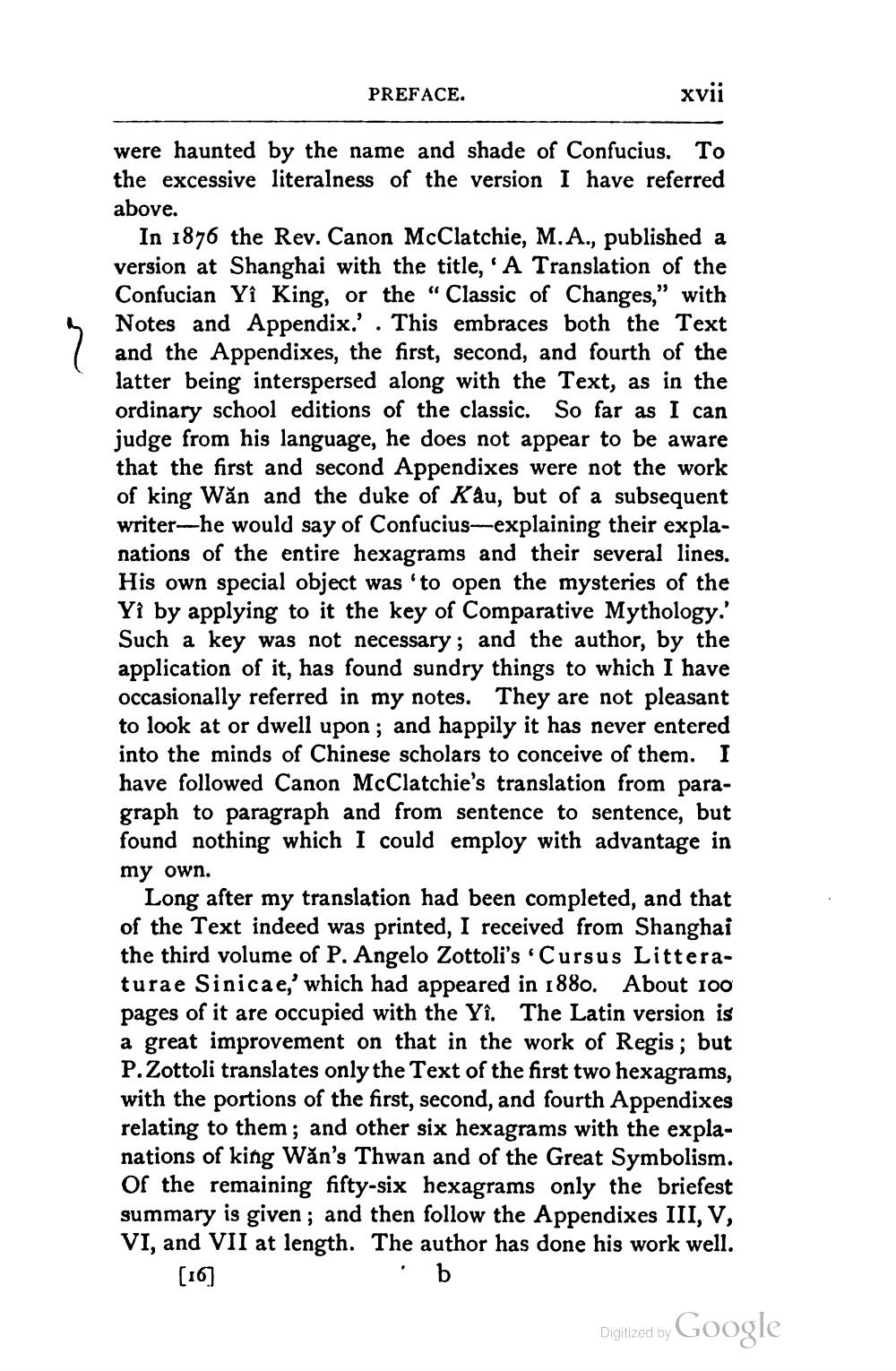________________
PREFACE.
xvii
were haunted by the name and shade of Confucius. To the excessive literalness of the version I have referred above.
In 1876 the Rev. Canon McClatchie, M.A., published a version at Shanghai with the title, ' A Translation of the Confucian Yî King, or the “Classic of Changes," with Notes and Appendix.' . This embraces both the Text and the Appendixes, the first, second, and fourth of the latter being interspersed along with the Text, as in the ordinary school editions of the classic. So far as I can judge from his language, he does not appear to be aware that the first and second Appendixes were not the work of king Wăn and the duke of Kâu, but of a subsequent writer-he would say of Confucius-explaining their explanations of the entire hexagrams and their several lines. His own special object was 'to open the mysteries of the Yi by applying to it the key of Comparative Mythology.' Such a key was not necessary; and the author, by the application of it, has found sundry things to which I have occasionally referred in my notes. They are not pleasant to look at or dwell upon; and happily it has never entered into the minds of Chinese scholars to conceive of them. I have followed Canon McClatchie's translation from paragraph to paragraph and from sentence to sentence, but found nothing which I could employ with advantage in my own.
Long after my translation had been completed, and that of the Text indeed was printed, I received from Shanghai the third volume of P. Angelo Zottoli's Cursus Litteraturae Sinicae,' which had appeared in 1880. About 100 pages of it are occupied with the Yî. The Latin version is a great improvement on that in the work of Regis; but P.Zottoli translates only the Text of the first two hexagrams, with the portions of the first second, and fourth Appendixes relating to them; and other six hexagrams with the explanations of king Wăn's Thwan and of the Great Symbolism. of the remaining fifty-six hexagrams only the briefest summary is given ; and then follow the Appendixes III, V, VI, and VII at length. The author has done his work well. [16]
. b
Digitized by Google




